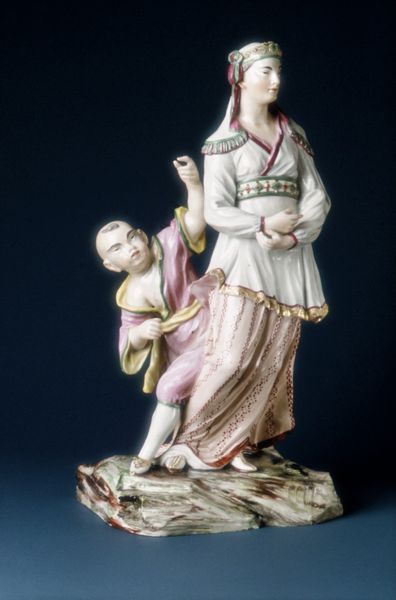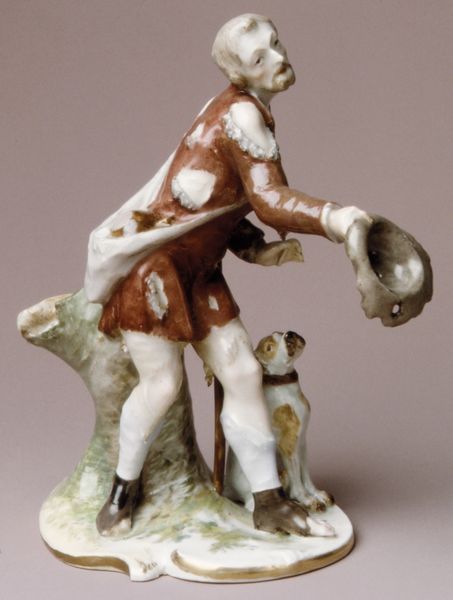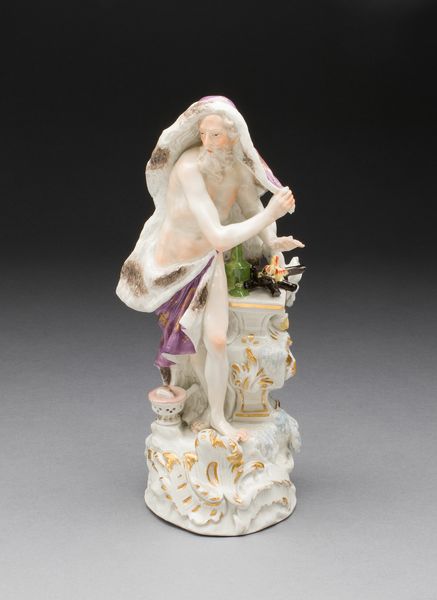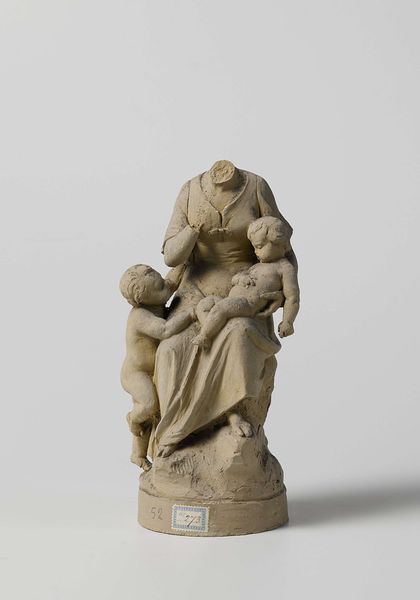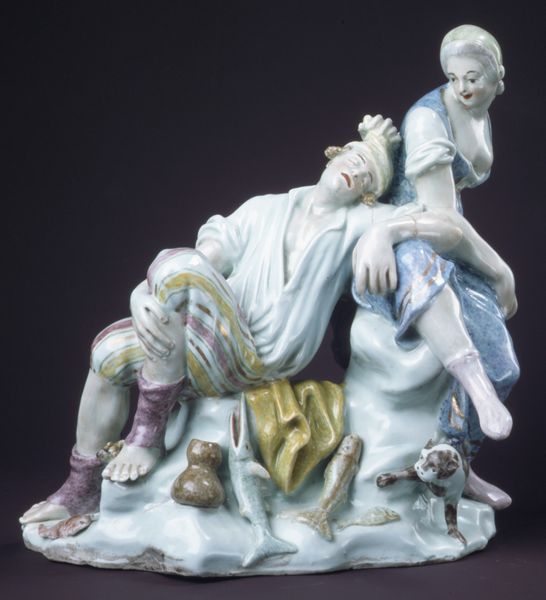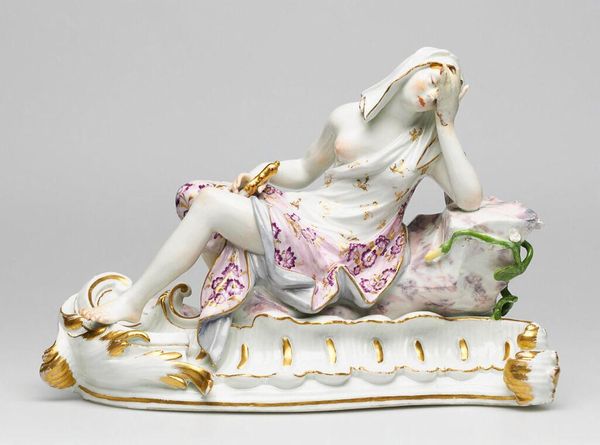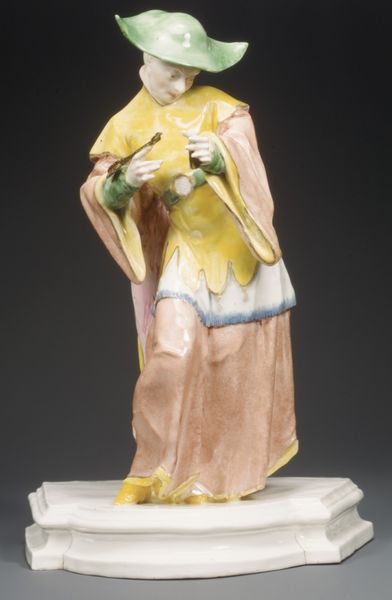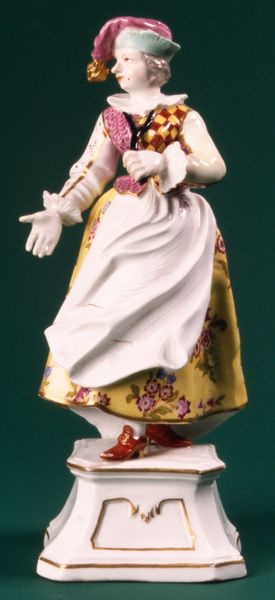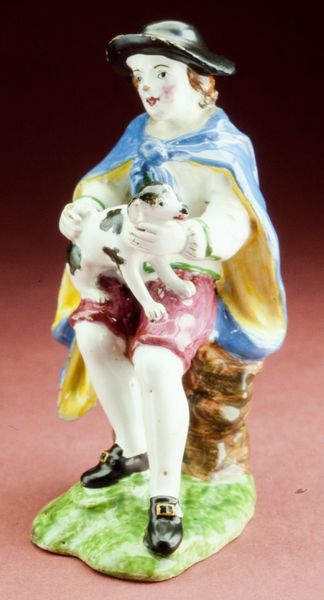
Chinese emperor and attendant 1762 - 1799
0:00
0:00
Dimensions: Height: 11 1/2 in. (29.2 cm)
Copyright: Public Domain
This sculpture, depicting a Chinese emperor and attendant, was made at the Ludwigsburg Porcelain Manufactory in the late 18th or early 19th century. It’s porcelain, a high-status material at the time. To create it, a soft paste would have been poured into plaster molds, then painstakingly finished, fired, and painted. Porcelain was known as "white gold" because of its association with wealth and refinement, and as a European imitation of Chinese originals, it also represents the global flow of goods and capital. The figure’s crisp details and translucent body are testaments to the artistry and skill required for its making, but the division of labor within the Manufactory would have meant that no single person could take credit for its design or execution. The sculpture’s very existence is tied to European aristocratic desire, and to the exploitation of both kaolin clay and human labor. By considering these factors, we can understand that its beauty is inseparable from its history.
Comments
No comments
Be the first to comment and join the conversation on the ultimate creative platform.
